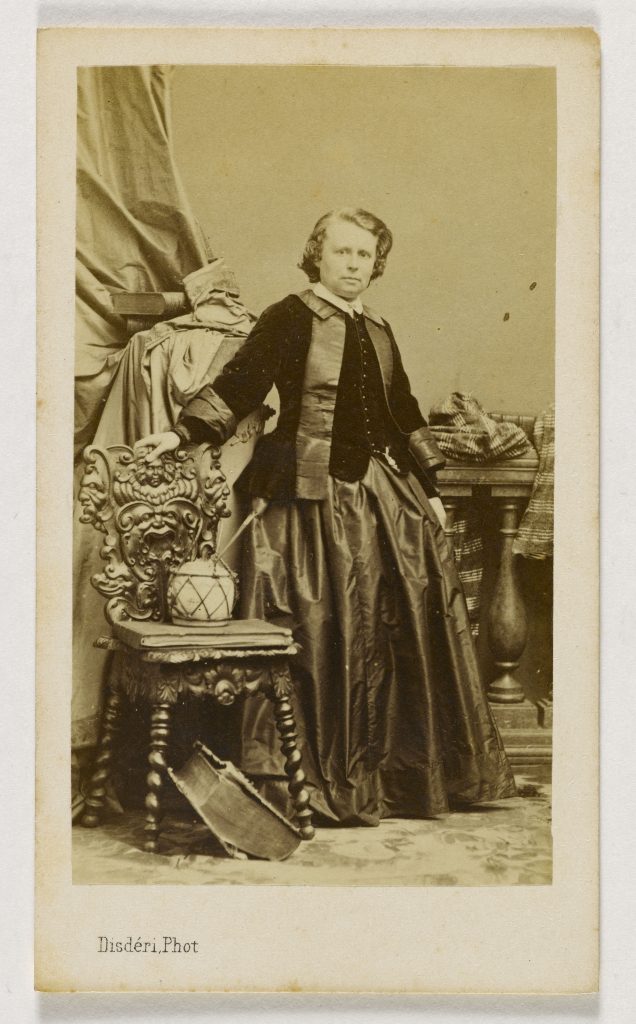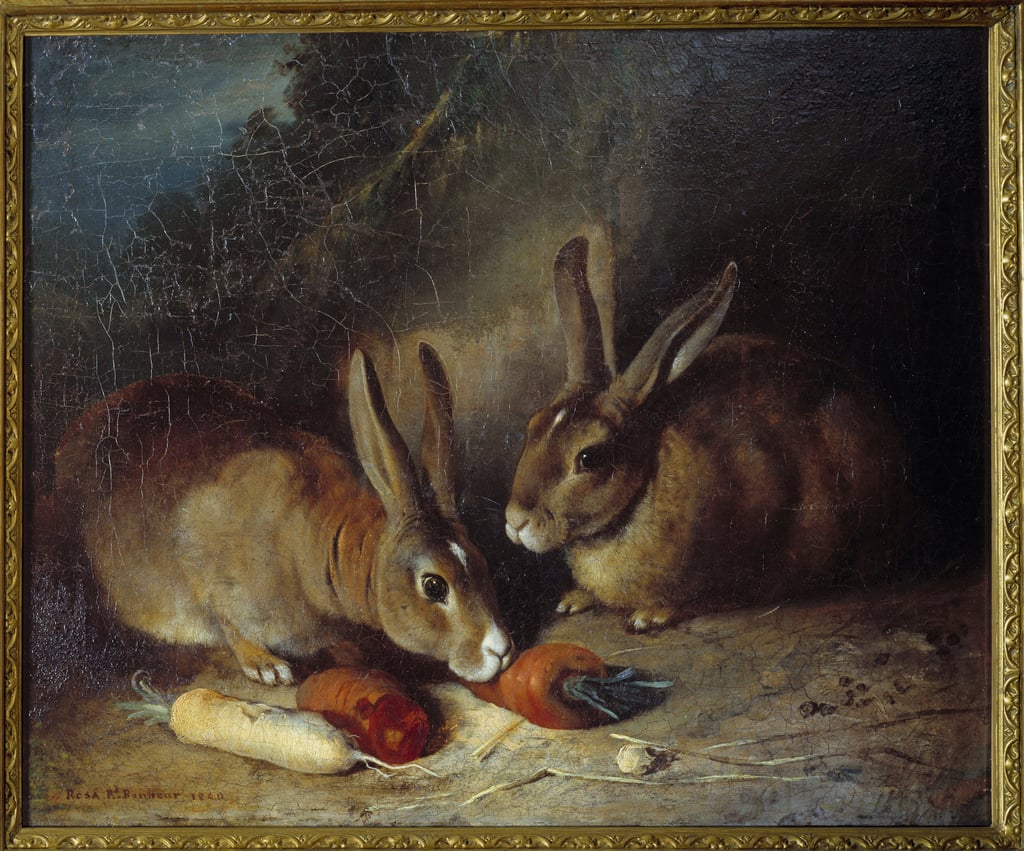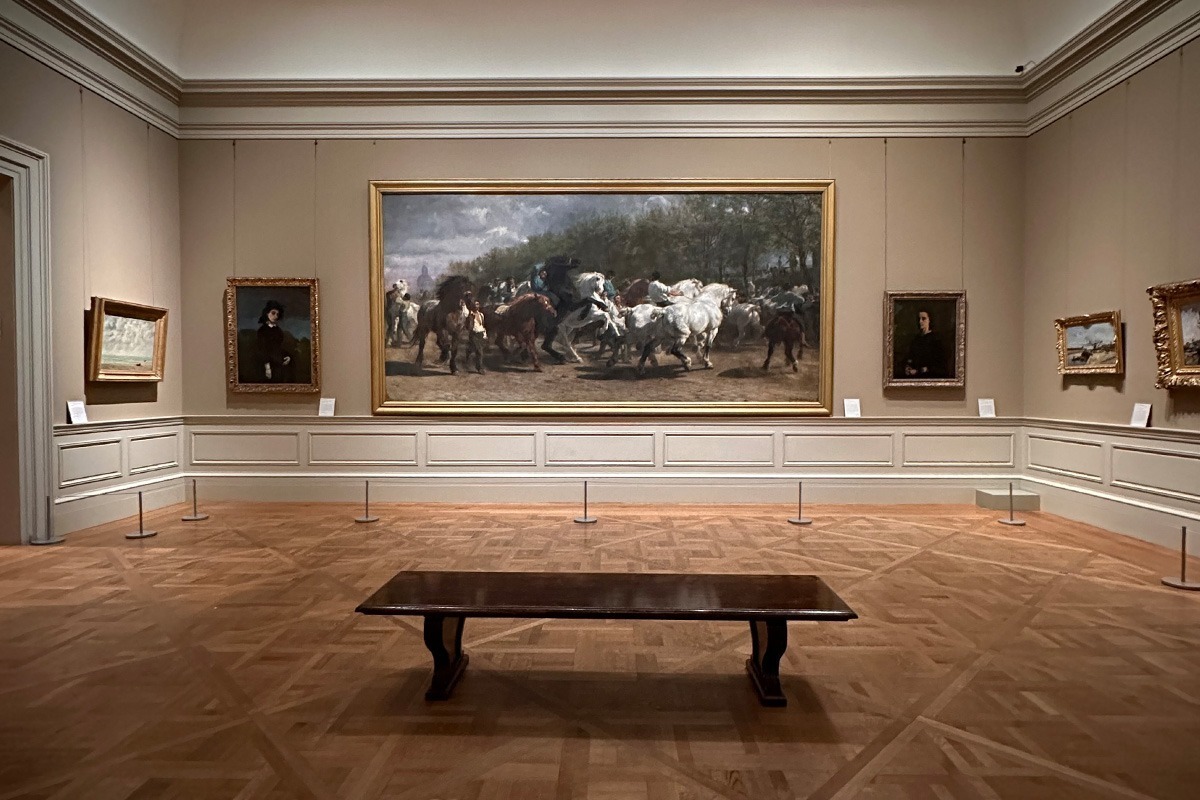
"Art is a tyrant. It demands heart, brain, soul, body. The entireness of the votary. Nothing less will win its highest favor. I wed art. It is my husband, my world, my life dream, the air I breathe. I know nothing else, feel nothing else, think nothing else."
– Rosa Bonheur
Rosa Bonheur, born in 1822, stands out as an unconventional force in the art world of the 19th century, surpassing even Monet and Renoir in popularity. This French artist's international career, largely forgotten after her death, marked a distinct chapter in art history.
Family Roots and Dedication to Realism
Born into a family of artists, Rosa Bonheur's artistic journey began amidst the second empire, where she learned drawing and painting from her father, Raymond Bonheur. Departing from the conventional themes of flowers or children in small scale, often reserved for female painters, Bonheur emerged as an animal painter, emphasizing realism and perfectly executed works. Her commitment to portraying lifelike scenes led her to sketch extensively including at the Louvre Museum.
In the vibrant artistic landscape of the XIX century, a period characterized by artistic evolution, Rosa Bonheur's rise was nothing short of groundbreaking. Her inaugural work presented to the Salon of 1848 featured two rabbits—a smaller painting executed with perfection, earning her the prestigious gold medal at the Salon.

This marked the inception of Bonheur's trailblazing path, where her commitment to realism and meticulous craftsmanship set her apart as a true innovator in the art world of the 19th century.
Unconventional Beginnings and "Le Marché aux Chevaux"
The pinnacle of Bonheur's career arrived with "Le marché aux chevaux" (first painting featured on this post) a masterpiece that not only achieved critical acclaim but also brought her financial success and autonomy. The painting, initially offered to the city of Bordeaux for a mere 10,000 francs, embarked on an unexpected journey to Belgium, where it gained greater acclamation than in Paris. Eventually, a Belgian collector, Ernest Gambart, secured it for a record-breaking 40,000 francs.
Note: In today's currency, 40,000 francs in the 19th century would be equivalent to a significant amount, roughly estimated at several hundred thousand euros or dollars.

Château de By, Artistic Independence, and Legacy
With the proceeds from her successful painting, Bonheur acquired the Château de By, now called "Château de Rosa Bonheur". It functions as a unique establishment, serving as a Bed & Breakfast, Tea Room, Artist's Atelier, and museum dedicated to her work. This financial independence allowed her to shape her artistic legacy on her terms. Notably, she prioritized private collectors. Bonheur witnessed the unprecedented occurrence of art speculation while still alive, sparking competition among American industrialists to acquire her masterpieces. This phenomenon, beginning with "Le marché aux chevaux," marked a turning point in art history and propelled Bonheur to global acclaim.
Horse Market, Unconventional Choices, and Representation of Animals
To authentically depict horses, Bonheur entered the exclusive male-dominated horse market, sketching from life two times a week for 18 months. Her unconventional choices reflected commitment to her craft. Bonheur's approach to representing animals without humanization set her apart. By capturing the soul of each creature, often through their eyes, she forged a connection between the depicted animals and the human observer. In the painting "Le marché aux chevaux,", you notice that the central point of this composition is the eye of the white percheron horse, handled by a man.
The eye-is it not the mirror of the soul in all living creatures?
– Rosa Bonheur

Fascination with American Culture
Despite never visiting the United States, Bonheur's fascination with American culture, fueled by books like "The Last of the Mohicans", influenced her depictions of vast open spaces. Her meeting with Buffalo Bill further enhanced her understanding of American culture. Europeans were completely enamored of William F. "Buffalo Bill" Cody’s Wild West show. When it traveled to Paris in 1889, French painter Rosa Bonheur visited the grounds of the show to sketch the exotic American animals and the Indian warriors with their families. Cody, in turn, accepted the invitation of Rosa Bonheur to visit her chateau in Fontainebleau, where she painted this portrait. For Rosa Bonheur, the great showman embodied the freedom and independence of the United States.

Empress Eugenie's Visit
A spontaneous visit from the French Empress Eugenie added an unexpected twist to Bonheur's routine. Caught off guard in her pants and painting blouse, she swiftly changed into a dress, showcasing the contrast between her unconventional lifestyle and societal expectations.
Conclusion: A Pioneering Legacy
Rosa Bonheur's artistic contributions flourished in an era that highly prized realistic painting. Her exceptional ability to establish a profound connection with animals and depict them with dignity secured her status as a trailblazing artist, achieving both financial success and autonomy. While Rosa Bonheur's relevance today should not be confined within the boundaries of modern values—given her birth over a century ago—she serves as a testament to a nearly forgotten tradition: traditional depiction and realistic oil painting. The intriguing anecdote featuring the Empress and her pursuit of permissions to wear pants sheds light on her adherence to the norms of her time. Rosa Bonheur's unwavering commitment to realism reverberates through the ages, particularly poignant considering the subsequent century's diminishing appreciation for this once-venerated artistic tradition.
More Reading
- Rosa Bonheur: Her Life, Her Work by the American painter Anna Klumpke (1909) (Digitalized book in French)
- Rosa Bonheur and Buffalo Bill (Video in English)

No Comments.